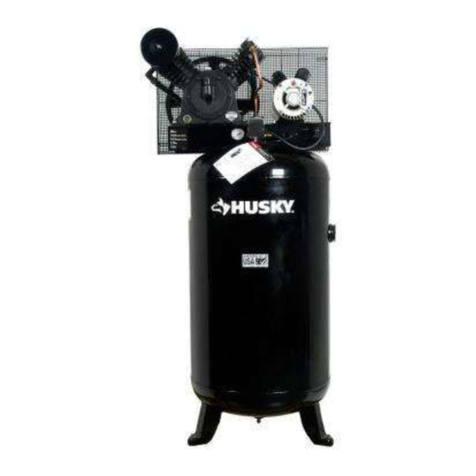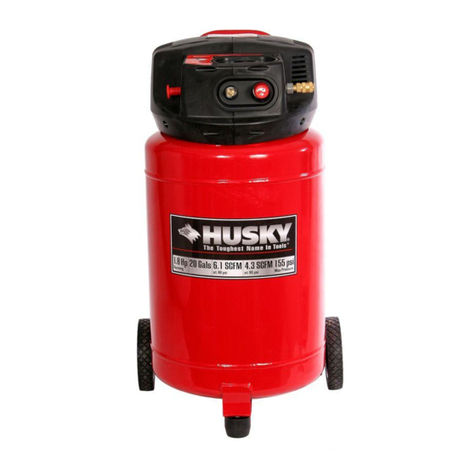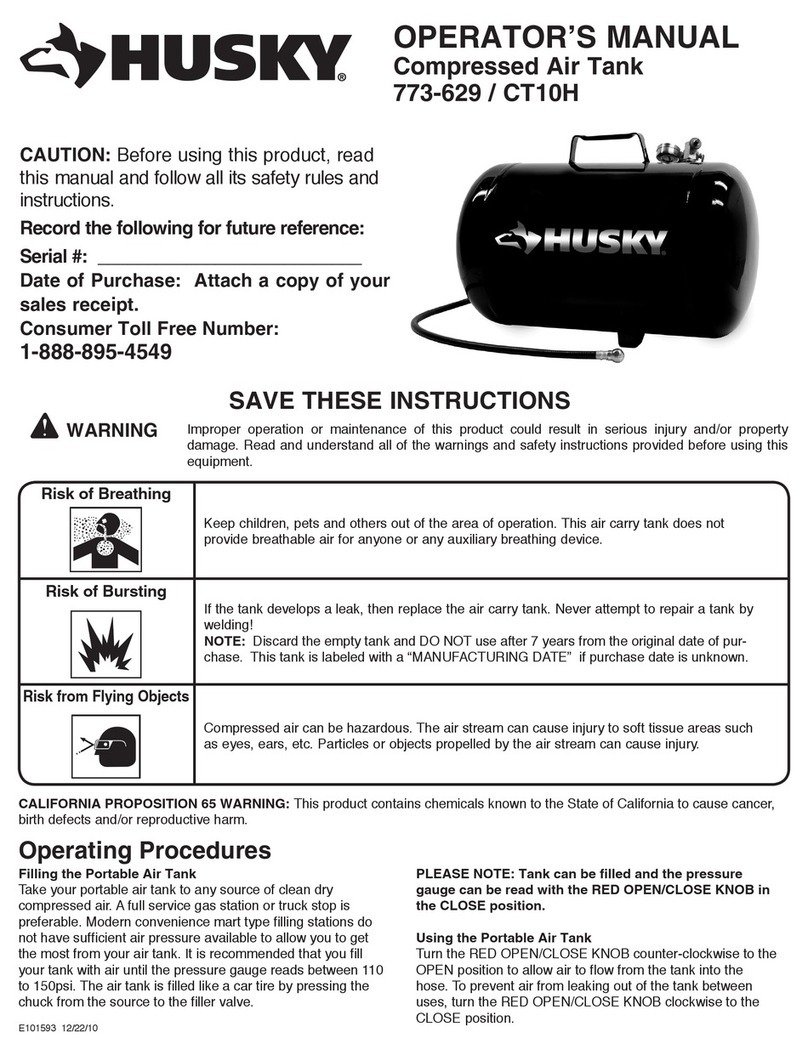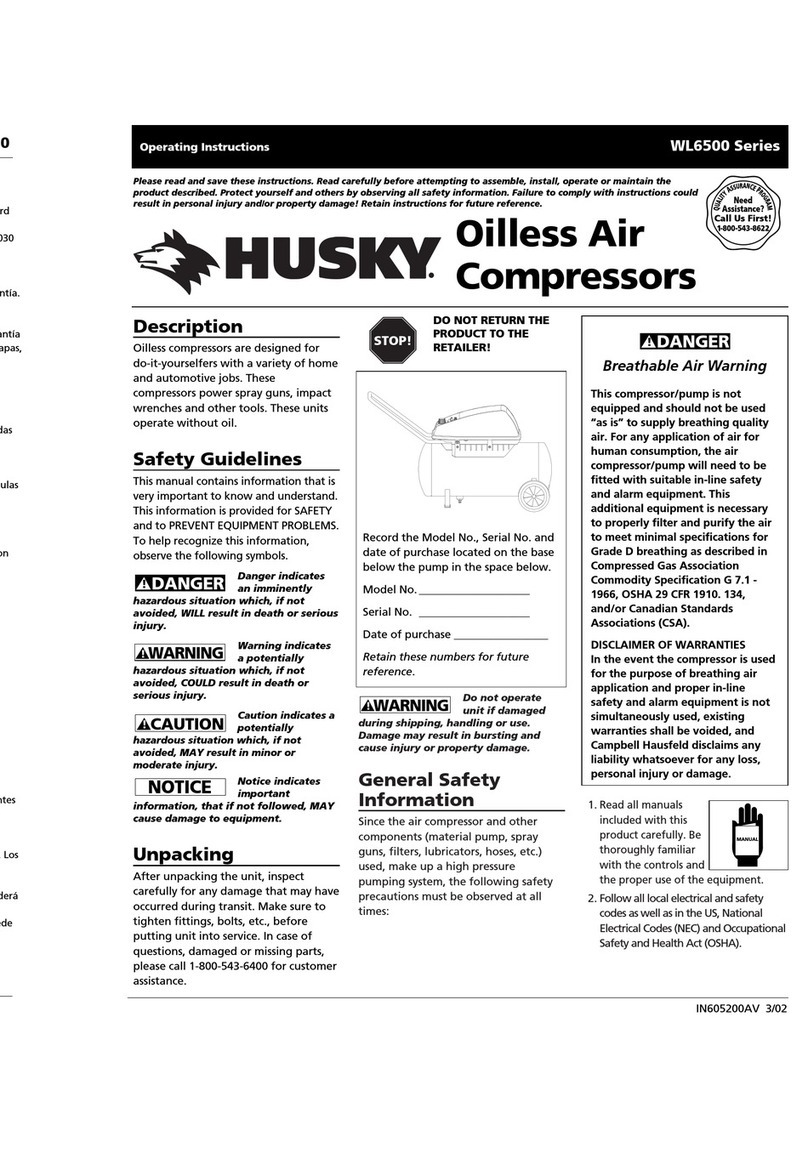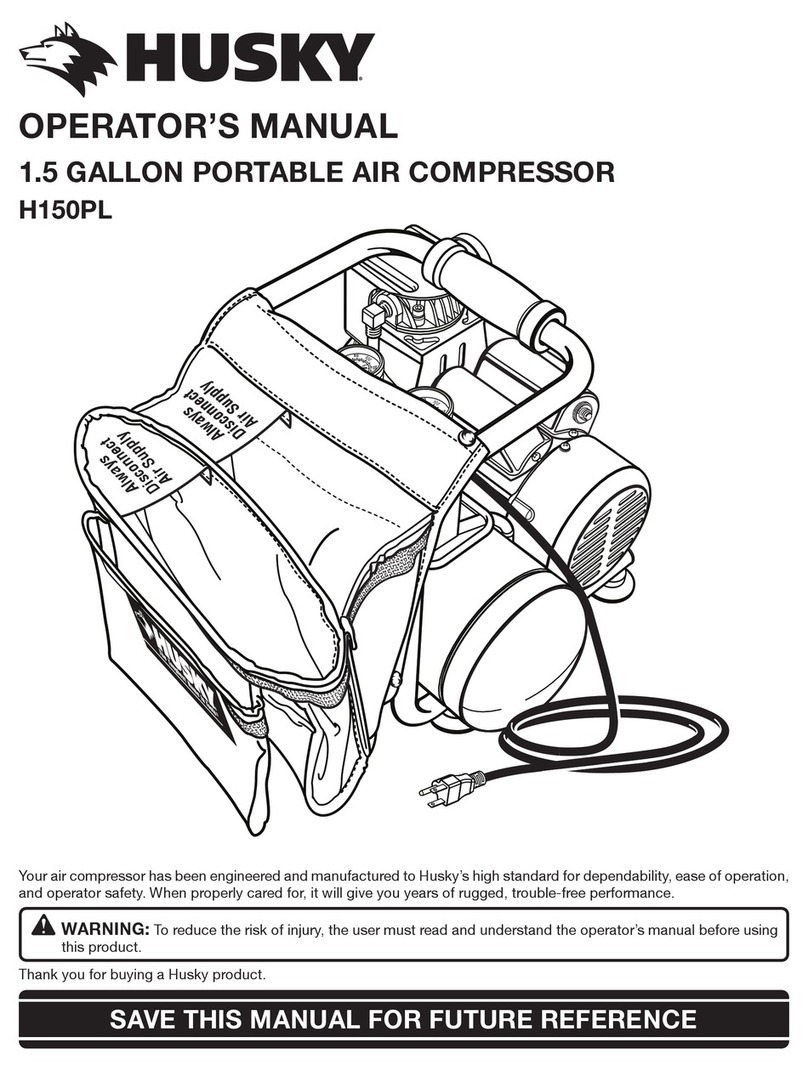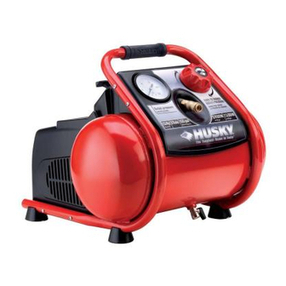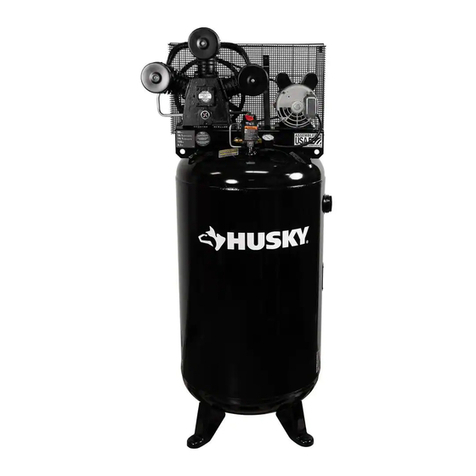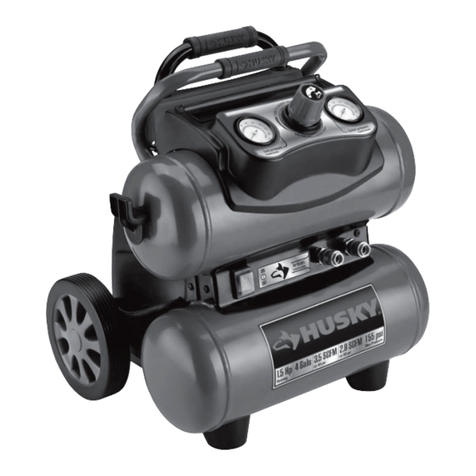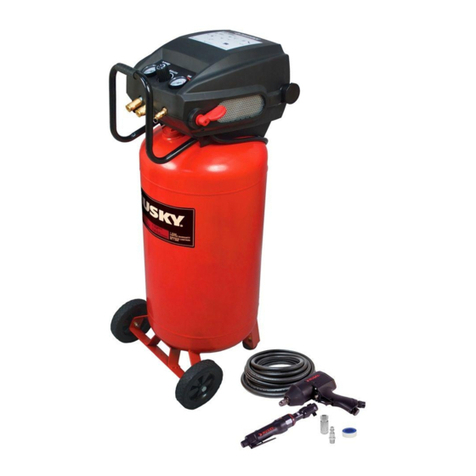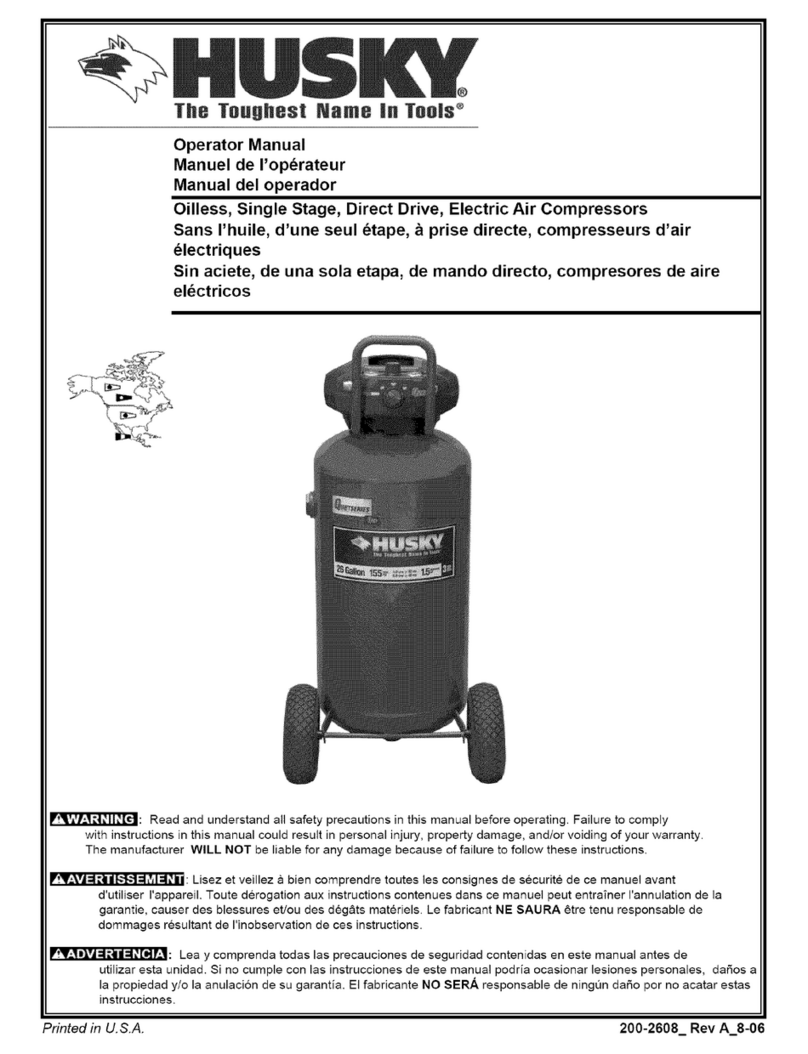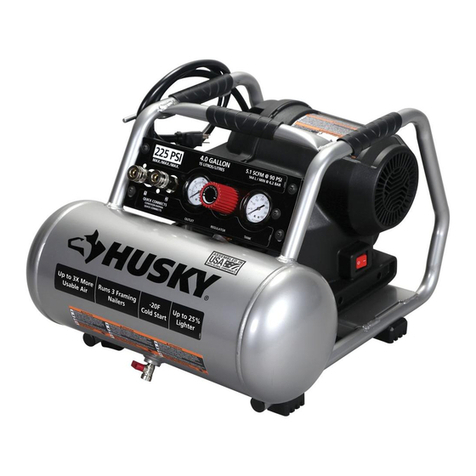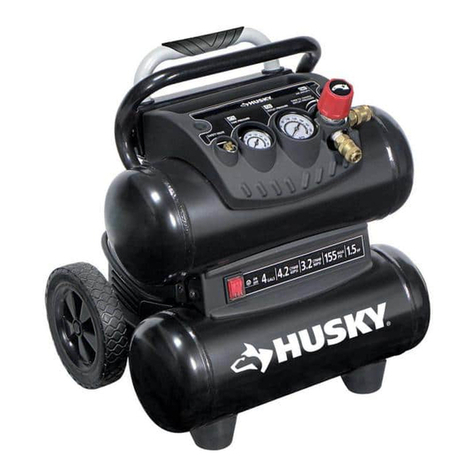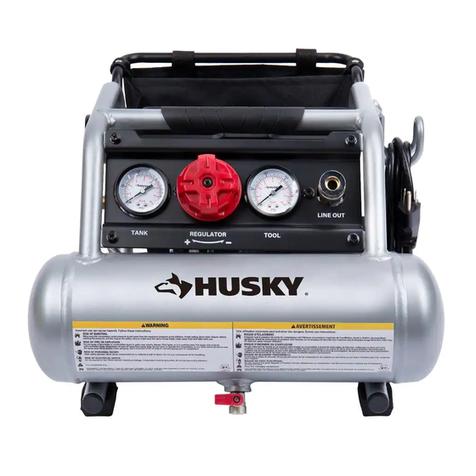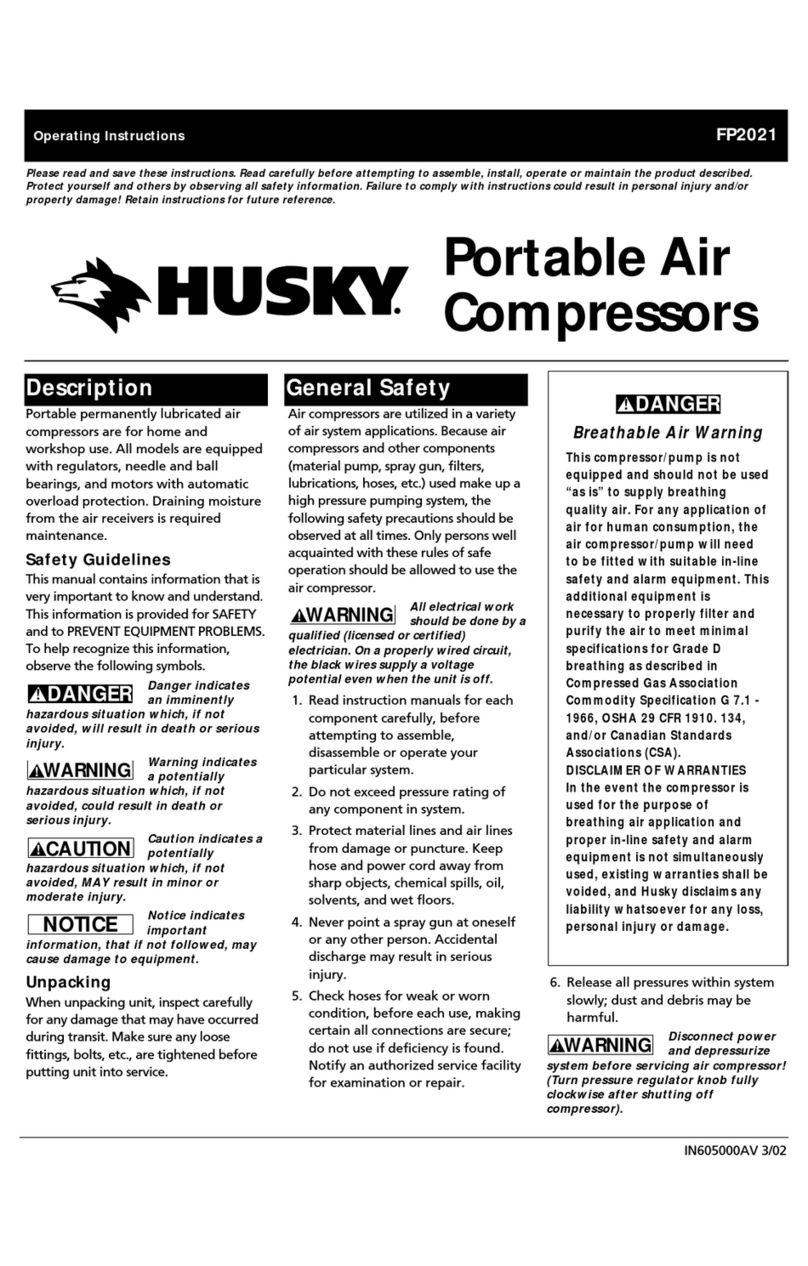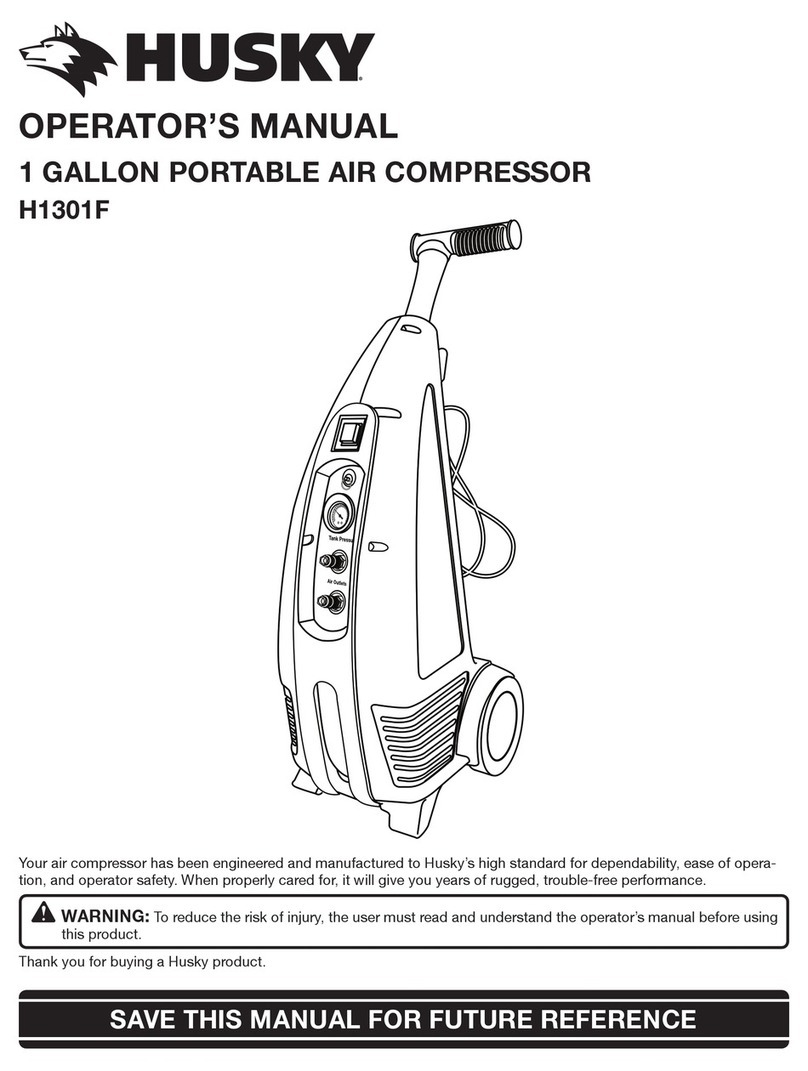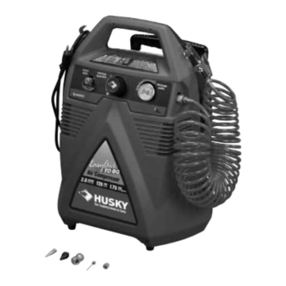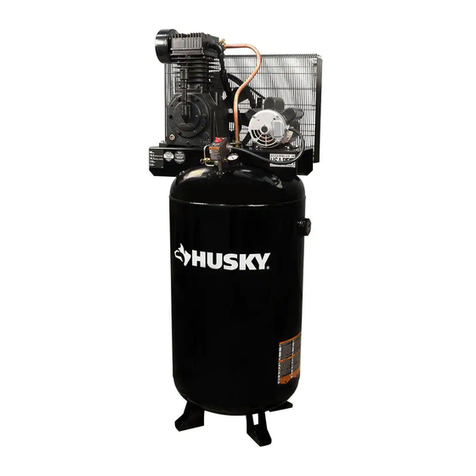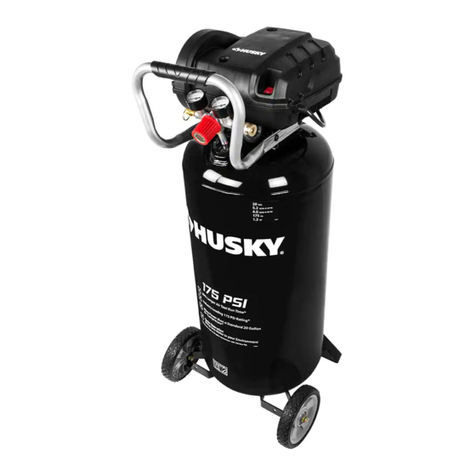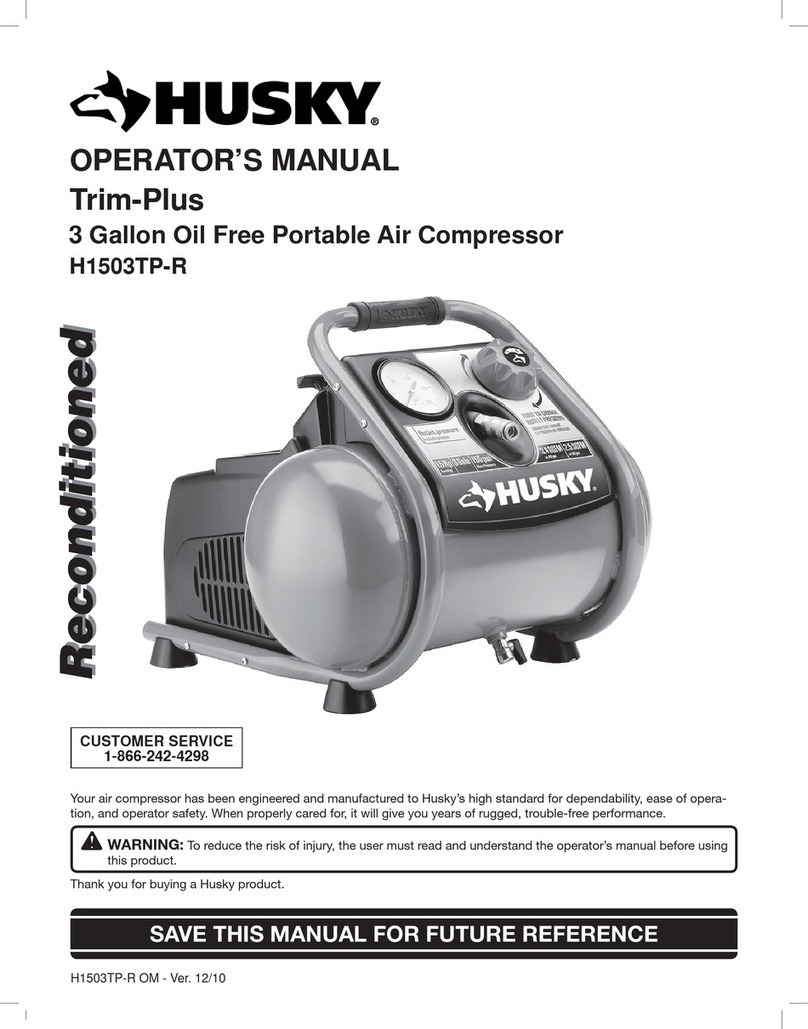WARNING: Risk of Bursting
Air Tank: The following conditions could lead to a weakening of the tank, and result
in a violent tank explosion and could cause property damage or serious injury.
How To Prevent It
What Could Happen
WARNING: Risk from Flying Objects
HOW TO PREVENT IT
WHAT CAN HAPPEN
The compressed air stream can cause
soft tissue damage to exposed skin and
can propel dirt, chips, loose particles,
and small objects at high speed,
resulting in property damage or personal
injury.
Always wear ANSI Z87.1 approved
safety glasses with side shields when
using the compressor.
Never point any nozzle or sprayer
toward any part of the body or at other
people or animals.
Always turn the compressor off and
bleed pressure from the air hose and
tank before attempting maintenance,
attaching tools or accessories.
HAZARD
HAZARD
Drain tank daily or after each use. If
tank develops a leak, replace it
immediately with a new tank or replace
the entire compressor.
1. Failure to properly drain
condensed water from tank,
causing rust and thinning of the
steel tank.
2. Modifications or attempted repairs
to the tank.
3. Unauthorized modifications to the
unloader valve, safety valve, or any
other components which control
tank pressure.
Never drill into, weld, or make any
modifications to the tank or its
attachments.
4. Excessive vibration can weaken
the air tank and cause rupture or
explosion
The tank is designed to withstand specific
operating pressures. Never make
adjustments or parts substitutions to
alter the factory set operating
pressures.
For essential control of air pressure, you
must install a pressure regulator and
pressure gauge to the air outlet (if not
equipped) of your compressor. Follow the
equipment manufacturers
recommendation and never exceed the
maximum allowable pressure rating of
attachments. Never use compressor to
inflate small low pressure objects such
as children’s toys, footballs,
basketballs, etc.
ATTACHMENTS & ACCESSORIES:
Exceeding the pressure rating of air
tools, spray guns, air operated
accessories, tires, and other inflatables
can cause them to explode or fly apart,
and could result in serious injury.
